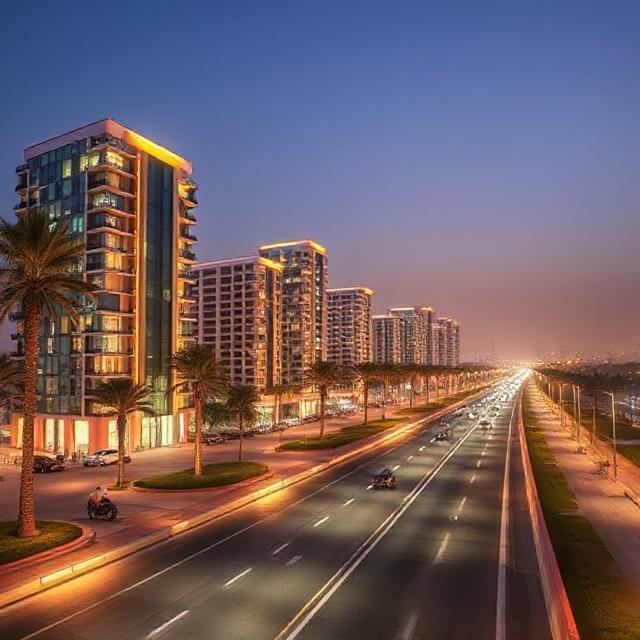Big Tech Boost for India: Tata Electronics and PSMC to Build India’s First Chip Factory at Dholera Smart City
Introduction: Why India’s First Chip Factory is a Big Deal
India is on the cusp of a technological revolution. With the foundation stone laid for the country’s first semiconductor fabrication plant (chip factory) at Dholera Smart City, Gujarat, the nation is making a decisive move towards self-reliance in electronics manufacturing. The ₹91,000 crore project, led by Tata Electronics in partnership with Taiwan’s Powerchip Semiconductor Manufacturing Corp (PSMC), is not just an industrial milestone — it is a giant leap for Atmanirbhar Bharat and the Make in India mission.
By December 2026, the plant is expected to roll out its first chips, with a production capacity of 50,000 wafers per month. This mega project is poised to create 20,000+ direct and indirect jobs and will cater to critical industries like mobiles, electric vehicles (EVs), 5G infrastructure, defense systems, and space technology.
This article explores everything you need to know about India’s chip manufacturing revolution — its impact, benefits, challenges, and future.
The Semiconductor Revolution in India
What is India’s First Chip Factory All About?
The Dholera Smart City semiconductor plant is India’s first commercial chip manufacturing facility, marking a breakthrough for a country that has long depended on global markets — primarily Taiwan, South Korea, and the U.S. — for semiconductor needs.
- Investment: ₹91,000 crore (~$11 billion)
- Partnership: Tata Electronics + PSMC (Taiwan)
- Capacity: 50,000 wafers per month
- Location: Dholera Smart City, Gujarat (India’s futuristic industrial hub)
- Completion Target: First chips ready by December 2026
- Jobs: 20,000+ (direct & indirect)
This plant will help India transition from being a semiconductor consumer to a semiconductor producer.
Why is the Dholera Semiconductor Plant a Game-Changer?
Why Does India Need Its Own Chip Factory?
Semiconductors (chips) are the heart of modern technology. From smartphones and laptops to EVs, satellites, and defense missiles — everything depends on microchips.
- Global chip shortage (2020–2022) exposed vulnerabilities
- Over-dependence on Taiwan & South Korea for chip supply
- Geopolitical tensions make chip imports risky
- Rising demand in India (expected to touch $100B semiconductor market by 2030)
Having India’s own chip fab reduces dependency, ensures supply security, and boosts the country’s strategic autonomy.
India’s Chip Factory at Dholera: Key Highlights
1. Massive Investment of ₹91,000 Crore
The semiconductor project is backed by one of the largest investments in Indian tech infrastructure, showcasing strong government and private sector commitment.
2. Partnership Between Tata Electronics & PSMC (Taiwan)
- Tata Electronics brings in financial power and Make in India momentum
- PSMC (Powerchip Semiconductor Manufacturing Corp, Taiwan) brings technical expertise and manufacturing know-how
3. Production Capacity of 50,000 Wafers/Month
Each wafer holds hundreds of chips. This scale makes India competitive in the global semiconductor supply chain.
4. 20,000+ Jobs Creation
Highly skilled engineers, technicians, researchers, and indirect workers will benefit. This creates a new semiconductor talent hub in Gujarat.
5. Multi-Industry Applications
The chips will be used in:
- Smartphones
- Electric Vehicles (EVs)
- 5G telecom networks
- Space technology
- Defense equipment
- IoT devices
Government’s Role: Atmanirbhar Bharat & Make in India
How Does This Project Align with Atmanirbhar Bharat?
The Dholera semiconductor fab is a cornerstone of the Atmanirbhar Bharat Abhiyan. By reducing reliance on imports, India secures its digital sovereignty and strengthens its position in the global tech race.
- PLI (Production Linked Incentive) Scheme for electronics
- Semicon India Programme with $10B funding support
- Strategic tie-ups with Taiwan, Japan, and the U.S.
This is not just an industry milestone but also a national security necessity.
Benefits of India’s First Chip Factory
1. Economic Growth
- ₹91,000 crore FDI equivalent investment
- Boost to India’s GDP & exports
2. Employment Opportunities
- 20,000+ jobs (engineers, researchers, technicians, supply chain workers)
3. Supply Chain Independence
- Reduce dependency on Taiwan, Korea, and China
- Secure chip supply for strategic sectors
4. Boost to Innovation & R&D
- Indian universities will see more semiconductor research
- Startups in AI, robotics, EVs, and IoT benefit
5. National Security & Defense Strength
- Secure chips for defense and aerospace
- Protects against foreign supply chain disruptions
Challenges India Must Overcome
What are the Possible Problems with India’s Semiconductor Push?
- High Capital Costs – $10B+ per fab
- Skilled Workforce Shortage – Need semiconductor engineers & fabs experts
- Global Competition – Taiwan, Korea, and U.S. are decades ahead
- Technology Transfer – Ensuring successful collaboration with PSMC
- Water & Power Requirements – Fabs need uninterrupted ultra-clean water & power
Despite these, India’s government and Tata-PSMC partnership are determined to make it succeed.
Dholera Smart City: India’s Silicon Valley in the Making
Why Was Dholera Chosen?
- Strategic location: Near Ahmedabad, Gujarat
- Smart City infrastructure: Designed for high-tech industries
- Government incentives: Land, power, water supply support
- Connectivity: Ports, highways, and airports nearby
Dholera is being branded as India’s Silicon Valley.
Impact on Key Sectors
1. Smartphones & Consumer Electronics
Chips for India’s massive smartphone market (500M+ users).
2. Electric Vehicles (EVs)
India’s EV mission requires battery management chips & sensors.
3. 5G & Telecom Infrastructure
High-speed communication needs next-gen chips.
4. Space & Defense
Secure chips for ISRO satellites, DRDO missiles, and military systems.
Global Reactions and Geopolitical Significance
- Taiwan sees India as a new ally in the semiconductor race
- U.S. & Japan support India’s semiconductor growth
- China views it as a competitor in Asia’s chip market
This fab places India on the global semiconductor map.
Future Outlook: What’s Next for India’s Chip Industry?
Will India Build More Chip Factories?
Yes. The Dholera project is the first of many fabs. Future plants are expected in:
- Karnataka
- Tamil Nadu
- Maharashtra
- Uttar Pradesh
India is aiming to become a global semiconductor hub by 2035.
Conclusion: A Giant Leap for Atmanirbhar Bharat
The Tata Electronics + PSMC semiconductor factory at Dholera Smart City is more than just an industrial project — it’s a turning point in India’s technological independence. With an investment of ₹91,000 crore, production capacity of 50,000 wafers/month, and creation of 20,000+ jobs, this initiative will power India’s mobiles, EVs, 5G networks, defense, and space missions.
By December 2026, when the first chips roll out, India will no longer just be a consumer of technology but a producer and innovator. This marks the beginning of India’s journey to becoming a global semiconductor powerhouse.











